|
“We’ve been conditioned to expect character development.”
– Ian Thomson.
Welcome back for this article, in which we will close out the second day of FutureSchools 2016 with talks from Ian Thomson and Stephen Lethbridge, speaking two vastly different topics. If you missed the previous article, you can find it here.
Ian (@ianthommygun) is the Director of ICT and the Arts at Amaroo School in the A.C.T, and he spoke under the title of Film in Five; Unpacking Videos in Education, which was a title which captured my curiosity given the move of my school towards BYOD, and the use of moviemaking as one of the new ways for our students to demonstrate their learning in new ways that were not available to them previously.
Ian opened by showing us the above short film made by students of his is a narrative about a group of students covering for the fact they overslept an exam. Ian made the point that we need to use film-making authentically rather than putting it into a unit like the proverbial square peg in a round hole, which happens all to often. He indicated that Cisco predicted that approximately eighty percent of all internet traffic will be video content by the year 2019, which when you look at the rate in which the video content statistics grow on The Internet in Real-Time web page, is very easy to believe. Ian also pointed out that YouTube is the second most popular search engine in its own right. I can certainly believe that given the propensity for people to respond with “YouTube it” when asked how to do something.
Ian introduced the five guerilla-like components of making a good quality movie or short film and then apologised to the literary buffs and English teachers in the room as he distilled “…a thousand years of literary gold into one diagram.”
Ian said that we have been conditioned over the centuries to expect character development in any quality narrative and that filmmakers at any level need to ensure that they leverage that fact, alongside framing the plot-twist in order to maximise the exposure and impact of the twist. Ian next spoke about how the use of shot-framing, or lack thereof, tells him a lot about the skill level of a film-maker. He indicated that we should be using the rule of thirds or that we should, at least, be aware of and understand the rule if we are going to disregard it. He also introduced a concept which was new to me, the idea of look room. This was described as creating a virtual space for the person who is off-camera that is being spoken to, as without look room, it can appear as if the person speaking is talking to themselves. Additionally, shooting over the shoulder of someone can be a useful tactic for shooting interviews to generate authenticity. Ian’s final note was that unless camera movement is a deliberate tool, which can be incredibly useful in some contexts for tension purposes.
Ian gave us a brief overview of how to light a scene properly, including keeping the prime light source behind you and over either the right or left shoulder if possible to reduce unnecessary shadows and that where possible, we should utilise three light sources for evenness and if need be, a fleckie or reflector, for fine control over specific areas of a scene. The image below gives an indication of what this might look like. in practice.
Following on from light was sound, which Ian described as being just as important to the quality and success of a film as the image being seen, indicating that where possible, we should utilise microphones rather than rely on the microphones built into devices. The reason for this, he explained is that the built-in devices are designed to capture everything and you have very little control of what you end up with in your sound file. An external microphone can give you that control as their range is more focused, narrowing the size of the cone which is recorded. It was also mentioned that the use of headphones on set can allow you to hear background noise whilst filming, and thus take steps to reduce it if appropriate is important as our brain is very good at ignoring sounds like the hum of a fridge or a fluorescent light. Ian also talked about the love of school students, particularly in primary and lower secondary, to add background music to their films, which has a tendency to override the audio. He compared background music to a picture frame. It is nice to have and it can enhance the picture, but not one is there to see the frame, they want to see the picture.
The final component which Ian discussed was the order in which certain types of shots are used, and that there were essentially three types of shots; a wide or establishing shot which provided information such as time of day and location, a mid-shot which shows you who is in the scene and is often utilised for, or as, cutaways and finally the tight shot which is often referred to as the close-up, is typically the shot type used for dialogue and should adhere to both the rule of thirds and the look room rule mentioned previously. You can see an example of what these different shot types might look like in the image below.
Following on from Ian, and closing out the day was Stephen Lethbridge (@stephen_tpk) who is Principal of Taupaki School in Auckland, New Zealand. Stephen spoke under the title Race to the Maker Space and opened with a quote from Gary Hamel and C.K. Prahalad that was included in an article entitled Competing for the Future.
“So the urgent drives out the important; the future is left largely unexplored; and the capacity to act, rather than to think and imagine, becomes the sole measure of leadership.”
– Hamel, G., Prahalad, C.K., (1994), Harvard Business Review. Retrieved from http://tinyurl.com/zvxcqk2 on 12 March 2016
Stephen continued by pointing out that Makerspaces used to be a fringe affair, but that they have recently become the hot item on the edu-bandwagon with maker spaces popping up everywhere. I have to admit that at this point I was a little unsure where Stephen was pro-maker space or not, a topic I had heard Gary Stager speak about at Future Schools 2015 and when Stephen asked if the audience had been Gary Stagered I was confused even further.
Stephen continued pressing the point, questioning maker spaces by asking if they needed to be physical, what is required for a maker space and that there seems to be so many variants of does and does not qualify as a maker space, but that ultimately there is no reason they cannot be virtual spaces, something that he pointed to Minecraft as an example of, and further, made the point that the maker space should never be the only space in a school, community or class where creativity or making can occur. Stephen referred to the New Zealand number eight wire mentality, as an indicator that the mentality behind maker space is part of the country’s cultural DNA. For Stephen, the only thing needed for a maker space is “…a thinking teacher that adapts to change” with the only tool required being the one in the image below.
Stephen spoke about the fact that maker spaces in school contexts were often attached to a single teacher and survived or failed based upon that teacher, including whether or not they stayed or moved on to a new school. Stephen continued by exploring the definition of a maker space as being a technological extension of the do it yourself culture, with a sub-culture of hacking having emerged which focuses on the pulling apart and re-purposing of parts and componentry, with a link to open-source plans.
The recognised founder of the maker movement is Seymour Papert, with Sylvia Libow-Martinez and Gary Stager the recognised patrons and champions of the maker movement. They have described making as something which is a purposeful expression of intellect.
The video above is was shown by Stephen as a cute way of dealing with his dismay at the New Zealand Breakers defeat in the NBL grand final, but including a friendly dig about the All Black’s superiority over the Wallabies, with a side-reference to the DIY culture.
Making, Stephen declared, was a stance, allowing the opportunity for students to have authentic experiences making real things, with the chance to follow something through for, as long Gary Stager has put it, “…longer than a course of antibiotics.” Stephen continued, reminding us that when good ideas are found in wider society with potential applications within education, they are often changed to fit the structure of education which is currently in place, rather than the structure in place being adapted to fit the new idea, resulting in watered down variations (a theme which Peggy Sheehy picked up in her keynote address on day three). Stephen proposed that we change making, that we think of it as a culture, a way of using tools to solve general problems, that it is about taking risks and making mistakes, and learning from them, that if it is good enough for our students, then it is good enough for the adults as well.
In Stephen’s school, there is a Make Club, the Ministry of Make (@MakeClub_NZ) where students can come along to be involved in making, but that they must have a parent with them (a step made to prevent it turning into another after school care / babysitting service) and that the students involved have designed, built and coded new garbage bins that light up and speak to people when they put rubbish inside, in an effort to address the question of how to decrease the problems around litter in the community.
To provide the greatest opportunity for a maker space to succeed in a school, the Principal needs to become the lead mistake maker, modelling making mistakes productively, allowing Twitter connections and encouraging professional autonomy to allow teachers to provide opportunities for organic making as part of the teaching and learning within their classroom. Above all, use the tools of today, today. Do not limit students to the tools of yesterday. For all articles in this series, please click here.
0 Comments
“The phrase, “technology and education” usually means inventing new gadgets to teach the same old stuff in a thinly disguised version of the same old way” – Seymour Papert (1972, as quoted on p. 19) In my initial post, which began this series, I wrote about the introduction to Libow Martinez and Stager’s book Invent to Learn where they gave us a brief overview of the maker movement and its place in society today. In the previous article in this series, looking at the first part of chapter one, we were given an overview of the historical origins of the maker movement and its pedagogical relationships with some of the giants of education including Piaget, Montessori and Dewey. This article will move through the remainder of chapter one, bringing us up to more recent times. Technology often comes across in the media and policy speeches as being some sort of panacea for education, as though decades of low-investment in schools and teachers can be ‘fixed’ by giving students with only a few years left of their schooling a laptop as was the case during the Australian Digital Eduction Revolution. Seymour Papert’s quote above is something that the authors called “…revolutionary for 1968, but sadly remains a perceptive critique of schooling today” (p.19). While technology can be an amazing enabler of creativity and critical thinking, it can only be such if it is utilised in a way that empowers students to be creative and critical thinkers. The current boom in the use of coding in schools, being labelled as a foundation skills that is as important as mathematics and reading only six months ago an article in The Age newspaper, is rather late considering that Seymour Papert and Cynthia Solomon published a paper in 1971 entitled Twenty Things to Do with a Computer that included coding, mechatronics, mathematical modelling and a range of other, then highly advanced learning activities that would by highly multi-disciplinary. The article also included a case for 1:1 computing, which has also taken education by storm as a seemingly new idea in the last decade. Papert’s contention in 1972 was that the newly popular concept of gamification; specifically, game design, would be a powerful way of teaching children mathematical concepts. In 1996, Papert wrote that John Dewey’s argument for a move away from authoritarian classrooms was now more epistemologically accessible due to computers, and that the ultimate pressure for change in the structure of classrooms will come from children themselves. The potential for technology to change how students learn concepts across the sciences, mathematics, literacy and the creative arts is monumental, but the thinking about learning needs to catch up. Papert likens the great educational thinkers such as Dewey, Montessori and Vygotskys, to name but a few, to Leonardo DaVinci. The ideas are new and exciting and powerful, however there is not the infrastructure in which to properly implement the ideas. The authors wrote that the Sputnik crisis created an environment where investment in hands-on science and mathematics was politically and socially popular, as were creative arts programs in schools and this led to less coercive schooling, with greater emphasis placed on individuality. It was, however, during the early 1960s in the Italian city of Reggio Emilia that making first became entrenched in an educational context. The community had been ravaged during World War Two and the decision was made to invest heavily in the rebuilding of the city with a long-term plan; the education of its youngest. The Regio Emilia Approach is the result of those years where the town’s infant and toddler care centres were built and run around the philosophies of Dewey, Piaget, Vygotsky and others, placing the child at the centre of the learning process. From the Reggio Emilia Early learning (Australia) website: “It’s only natural that children who are regarded in a warm and positive light will always succeed at a higher level than those who are judged in a limited or negative way. Libow Martinez and Stager write that the teacher’s primary role in this learning context is a researcher tasked with preparing a learning environment suitable for a child based upon an understanding of that child’s thinking and interests. Vastly different from the role of a traditional teacher. There is now around fifty years worth of documentation and research on the Reggio Emilia Approach, and the authors contend that it “…may represent the world’s most mature model of sustained constructionism and progressive education” (p.23). It is the advent of microcomputing that heralded the next large step forward for progressive education, with Neil Gershenfeld predicting that the next technological revolution would be one wherein users would make the tools they needed to solve their problems, something is now happening thanks to the growing use of Three-Dimensional Printers in school, industry and at home (p.24). This is leading to a situation where students are now being seen as inventors, teachers and collaborators with the driving force being mutual need, interest and style (p. 25). Thinking this through cause something of an “A-ha!” moment for me, as I connected the dots between the Reggio Emilia Approach, making and the Gershenfeld’s prediction, I realised that what we call self-directed learning is very often not that at all. It is in actuality, Teacher-led, but with less teacher involvement in the doing. This has profound implications for teachers, as there is also a growing body of literature to help guide and inspire adults ‘in charge’ of children’s learning to incorporate making in their pedagogical practice, such as Make magazine, Howtoons, Fifty Dangerous Things (You Should Let Your Children Do) and 62 Projects to Make with a Dead Computer (and Other Discarded Electronics). Materials are also becoming cheaper and easier to access, including MakeDo, Suguru, MakeyMakey and a range of others, beyond the household items like empty boxes, bed sheets, cushions and lego. All of these factors are coming together to create an environment ripe for children to be the creators of the learning, as evidenced in Sylvia’s Super Awesome Maker Show series of Youtube videos. Libow Martinez and Sager write that it was in the late 1960s when Papert asked whether it was the computer programming the child or the child programming the computer, and it is now in the early twenty-first century that we have reached a point where it is now relatively easy for any child to access the equipment and information required for them to program a computer. Indeed, it is now becoming common for coding to be a part of a school curriculum, a movement that is becoming stronger, seemingly unchecked.
I would very much like to hear what my readers think about making in general, and making in the school context in specific. Thank you, as always, for reading, and you can find the other articles in this series by clicking here. “I do not think there is nay thrill that can go through the human hear like that felt by the inventor as he sees some creation of the brain unfolding to success. Such emotions make a forget food, sleep, friends, love, everything.” – Nikola Tesla, quoted on p. 11 of Invent to Learn Martinez and Stager’s first chapter in Invent to Learn is interestingly titled An Insanely Brief and Incomplete History of Making and begins with the above quote from Nikola Tesla. The chapter provides an overview of the historical figures who have played a part in making and tinkering and some of the trends that have been felt through the various ebbs and flows of making over the course of history. There are links made to education, of course, and it is interesting to read some of the historical links between education and making, particularly in the twentieth century with the advent of ‘toys’ like Lincoln Logs and, eventually, Lego. The first sentence in the chapter is at first glance a bold one; “[m]aking things, and then making those things better is at the core of humanity.” When you stop and take a moment to think about it, it is one of the defining characteristics of our species, is that there has always been an element of curiosity which drives the iterative creative process of inventing and making. It is interesting, I think, that in many stories of other societies, that curiosity-driven innovation and making is one of the characteristics which is consistently absent, though often shown in varying formats. Examples abound of this, including Wizarding society in the Harry Potter saga, Fahrenheit 451 by Ray Bradbury, and from a certain perspective, the Elves in J.R.R. Tolkien’s Lord of the Rings saga. Marinez and Stager write that there is a historical acceptance at the core of humanity that direct experience with skills and concepts is where learning occurs at its best, or to phrase it another way, learning by doing is historically accepted as the best way to learn. It is their contention that the maker movement represents “…our best hope for reigniting progressive education” (p.11). The first example that is held up, is someone posited to be the greatest maker in our history, a statement which I would agree with, as I can think of no person more prolific and masterful in such a vast array of disciplines, as Leonardo Da Vinci. The authors moved on from Da Vinci to discuss some of what they termed, the unsung heroes of making. Jean-Jacques Rousseau’s 1762 publication of Emile, or On Education, is held up as an early discussion of the natural abilities of the child and the need for free development. There has been substantial criticism levelled against the treatise, however, not having read it, I cannot comment either way. Following on from Rousseau was Johann Pestalozzi, who held to the belief that not only was learning a natural occurrence, but that it was necessary for learning to be balanced between the heart, the head and the hand, best achieved by first-hand experience. Our understanding of Kindergarten, it seems, was developed by Friedrich Froebel, who in turn was influenced by Pestalozzi when he studied under him. Froebel leaned heavily upon learning by doing in his kindergarten design, and these ideas were also taken up by Maria Montessori. Many of the ideas of some who are held up as giants in educational history, John Dewey, Montessori, Froebel and Pestalozzi were formalised and confirmed by Jean Piaget, who’s publication To Understand is to Invent strongly advocated for learning by doing, a theory of learning which became constructivism. Constructvism holds many strong and clear links to both Froebel and Pestalozzi’s ideas. Piaget took this a step further, and championed the idea of teachers as polymaths, as they would hold the skills and knowledge to enable their students to become polymaths, à la Leonardo Da Vinci, perhaps. Piaget believed that abstract or theoretical concepts and ideas, which students often struggled with, were both solved and understood with a different attitude when presented in a concrete situation, related to either a student interest, or another concept with which the student is familiar. Piaget extended this by indicating that instead of introducing a skill or concept with the pre-organised vocabulary needed to understand the learning focus, that instead, teachers should provide a learning environment appropriately grounded in action within which the real action will lead to the need for and easier integration of the specific vocabulary. I can understand Piaget's concept here, I believe. Having the need and the context for particularly vocabulary components allows for an immediate integration of those components as there is a frame of reference and need for them to be integrated, rather than them being abstract terms with no meaning. Martinez and Stager moved on at this point and examined John Dewey’s relationship with education and making. Dewey’s belied was that learning, or the education process, was a lifetime process of growth driven from personal motivation. Dewey strongly advocated for authentic and inter-disciplinary grounded in reality using an iterative design methodology. Dewey held the belief that the standards of adults should be subordinated to the needs of children. The concept of using careful observation and and previous experience in learning is not new, and were necessary for early humans in order to hunt, fish, grow crops and build shelters and housing. It is pointed out that things reached a point in the seventeenth century where ‘gentleman amateurs’ were a significant component of the scientific community, and that amateur scientists contributed much to our bank of knowledge over the years through the connection between ideas, people and disciplines. It is this connection which is foundational to today’s maker movement, made simpler than in previous generations through the use of computers and the internet.Martinez and Stager report the words of Norm Stanley at the First Annual Citizen Science Conference in June 2002: “Science, as we know it today, would not be what it is without the contributions of amateurs. In fact I think it not too brash a statement to assert that basic science and what we know as the scientific method was largely developed by amateurs. From alchemists in search of the Philosophers’ Stone to monks investigating Nature in pea gardens to the gentlemen amateurs of the seventeenth century on, they were developing the experimental/observational/hypothetical approach of modern science. True, with the passage of time the role of the amateur, working independently, has diminished as experimental techniques became highly sophisticated and string and sealing wax no longer sufficed for doing cutting-edge science. Despite vicissitudes, amateur or recreational science remains healthy today, as witness the present gathering.” -Norm Stanley, p. 15 of Invent to Learn. Full text of speech available here. Stanley’s full speech talks about way in which it was quite common for children to conduct their own experiments using the then-popular chemistry kits, and Martinez and Stager comment that these home chemistry labs captured the imagination for around two hundred years until “…ninnies suddenly determined that fire, chemistry and fun were just too dangerous for young people” (p.15). From these chemistry labs, it was the introduction of Lincoln Logs, Constructor Kits, Meccano and Lego that allow model-making from users’ imaginations, and that toys of this ilk are now capable of making the real thing, in many cases, as demonstrated in the below video. It was the self-proclaimed hackers of The Tech Modern Railroad Club (TMRC) in the late 1950s and the essential belief that taking things apart, understanding how they function and then creating new and more interesting things from this knowledge is perhaps the first recognisable maker movement, in the terms of which we would understand it today, and is echoed in the motto of the maker movement; “if you can’t open it, you don’t own it” (p.17).
The maker movement is something that I can see value in, and I certainly agree with the general principle of learning by doing. Implementing this in schools, where teachers, for better or worse, ware required to teach specific content and students are required to sit specific standardised tests, with funding and public perception of the quality of education and teachers riding in large part on those tests, makes it challenging to sell the concept to many school leaders, particularly given the increasing amount of litigation that seems to be occurring. I distinctly remember in Year Six, reading The Lighthouse Keeper’s Lunch and us having to design, and create an alternative method of getting lunch to the lighthouse keeper. We were engaged, learning, problem solving, thinking creatively and critically, failing and then analysing why we failed…it was such a rich environment, but I cannot recall the last time I have seen something similar. The safety concerns (litigation fears) make it difficult, but it is a barrier that should be overcome as it has such rich scope for learning. I thank you for reading through Part One of my Review of the first chapter of Invent to Learn. The next article will be be published next Tuesday, and will begin with Martinez and Stager’s introduction of Seymour Papert.
“Playrooms and games, animals and plants, wood and nails must take their place side-by-side with books and words.”
– Angelo Patri, A Schoolmaster of the Great CIty, 1917
Recently I wrote about the lack of personal reading that I had been doing in general, both for enjoyment and for professional development and committed to rectifying, at least, the reading for professional development aspect. I decided that I would begin with reading Invent to Learn: Making, Tinkering, and Engineering in the Classroom by Sylvia Libow Martinez (@smartinez) and Gary Stager (@garystager). I was fortunate enough to hear Gary speak at FutureSchools in March of this year and was able to purchase a copy of the book, which Gary kindly signed.
I began reading it on the train home that evening, and was both challenged and inspired, but promptly got busy, with the remainder of FutureSchools, preparing for my current position which I had been offered whilst attending FutureSchools, and failed to return to reading the book, which brings back to this article. Having committed to reading a chapter of a book each week for professional development purposes, I decided to start with Sylvia and Gary’s book. All quote within this article have been sourced from this book, unless otherwise referenced.
Angelo Patri’s quote, which I have included at the top of this article, encapsulates, I believe, the general sentiment behind the Maker movement while providing a relevant opener for the book’s Introduction. Sylvia and Gary provide a very general summary of the history of learning vis-a-vis the Maker movement by pointing out that play and experience is prized, both within Angelo Patri’s opening quote, and as the work of childhood. Think to your Facebook wall, and how many videos of your friend’s or family member’s young children have been posted celebrating milestones such as first steps, or even just general play and exploration, and the celebration we and those children exhibit when something new has been accomplished. They write that the cessation of learning centres where students were able to become lost in the flow of learning something in depth is a relatively recent occurrence, describing how it teachers were regarded as polymaths for whom becoming a teacher implied that playing the piano, making puppets and mathematics manipulative objects out of household items were as much a part of mastering the craft of teaching as learning to teach reading, physical education and science. Sylvia and Gary write that it has “…been a dark time for many schools in the last few decades,” and they provide some examples to demonstrate this:
Further to this, Gary is not shy about speaking his mind on Twitter, and has expounded his views on educational commercialism on twitter on occasion, denouncing the rise of the empires of educational corporations selling textbooks, tests and learning management systems (LMS). Not only does this take education further afield from Angel Petri’s opening quote, it also removes education from John Dewey’s vision of education; “give the pupils something to do, not something to learn; and the doing is of such a nature as to demand thinking; learning naturally results” (Dewey, Democracy and education: An Introduction to the Philosophy of Education, 1916) It is this move towards a commercial ‘EduEmpire’ that has created what Sylvia and Gary see (or rather, my understanding of what they see) as a dark time in education as it has led to the creation of classrooms that are increasingly empty of on-going exploratory play with rich materials and deep learning via doing. It is the embedded nature of technology and computer processors as a result of miniaturisation and the resultant change with the way we interact with our tools that has created a situation wherein the Maker movement has been able to thrive. This change in the way technology is available along with the now ready access to cheap tools and materials has resulted in an ease of access and shareability of ideas, designs, and reduced the barriers to engaging with making and tinkering. The authors point out that it is through direct experience, touching and playing with materials that children have their first learning experiences and the Maker movement naturally overlaps with our nature of learning by doing. School regularly compartmentalises, unnaturally, the learning areas into discrete subjects learned in isolation within the context of that learning moment, despite that not being how learning or the application of learning occurs outside of school. It is pointed out that there is an overlap outside of the school between the hard and soft sciences; architects and craftspeople deal with aesthetics, tradition and mathematical precision. Lewis Carroll, of Alice in Wonderlandfame was also, under his birth name of Charles Lutwidge Dodgson, an accomplished mathematician. This sentiment of the overlapping nature of the various disciplines is captured neatly in this quote:
“…it obliterates the distinction between vocational and academic education. When the same hardware and process skills are required in the physics lab as the art studio as the auto shop, schools need to no longer sort students into imaginary tracks for jobs that no longer follow those arbitrary rules.”
– p.3
They go on to discuss that now, with the ability to provide tools, materials and contexts, there are multiple pathways to learning those skills and concepts and pieces of knowledge which we have always taught, some of which were unimaginable until only recently. Active learning places students at the centre of the learning process, and tinkering and making are active and engaging ways of learning by doing. I was involved in a chat on twitter recently about power in schools and giving power and agency to students and this image was shared with the chat:
It fits, I feel, nicely with the general sentiment. Children often (not always, it must be noted) learn best when they do that which they are supposed to be learning. I do need to note that whilst I can absolutely see the value in tinkering and making and coding, I am not convinced that we should be putting the level of emphasis on coding that I seem to hear about. They are all powerful tools in and of themselves, but the questions that we should be asking about using technology or any other tool, for that matter) within the class apply here as well.
This is a theme I have heard before, when Paul Hamilton discussed using augmented reality in the classroom at Future Schools. He commented that as teachers, we are creators and designers of learning and that when we design a learning experience around an app, that we negate all of our training. A builder would never design a dream house based upon a new tool s/he has just bought, it would be designed around being an amazing house, and let the tools sort themselves out later. The line between the utopia of learn by doing all of the time and the need to teach the curriculum is one that needs to be carefully balanced by individual teachers, policy makers and school leaders. I certainly do not profess to be an example of what it should look like, I am very much aware that I am still learning my craft as a teacher, particularly as I am working in an RFF capacity at the moment and thus do not have the day to day consistency of the group of students and am very much subject to the vagaries of timetable interruptions. But I am learning and, I believe, improving. This concept is a challenging one, and even if a Maker space does not eventuate in my school, I can see myself embedding the principles of Making in my teaching style. As always, please leave comments or questions about what I have written in the comments section. The Maker movement is something that is still in its infancy in the school-context, here in Australia at least, and I am very much curious about others’ thoughts on the topic. Ordinarily, Monday afternoon is the day that I post a new FTPL video, such as this one, and ordinarily, I would open an article with a quote that has either some relevance to the article topic, or education in general. Not today. You may recall that I recently wrote about my troubles with engaging with reading for professional development and that I would begin reading Invent to Learn by Sylvia Libow Martinez and Gary Stager. I have read the introduction, and I have begun writing an article based on that portion of the book, but I felt that the last page of the Introduction was deserving of an article in its own right. If you do not yet have a copy of the book (a state you may rectify by clicking here), the Introduction concludes with a poem, which I have found online and included in full, below. The Hundred Languages (1) I showed this poem to Mrs C21 this afternoon and asked her for her impressions, wanting to find out if they echoed my own. She replied “yep, that was school” which was essentially my own initial emotional response to the poem. It is a sad indictment on our education system, I believe, that the above poem is an indicator of what schooling has been reduced to. It is a narrative that we have seen play out in the nightly news and the election cycle over the last few decades as schooling gradually moved towards the data-driven standardised-testing focus mechanism that it now appears to be. Many teachers do work hard to include facets of tinkering and play in their teaching, and I believe, I hope, that we will see a balance found between the need for data to drive the political cycle, and the needs of our students and their futures. I am looking forward to diving into this book over the coming weeks, and to challenging my own perceptions and beliefs about tinkering, the makerspace movement, its application to education and education in general, and would very much like to hear what your thoughts and responses are to the poem above. (1) Loris Malaguzzi (translated by Lella Gandini) as cited in Libow Martinez, Stager (2015), p. 8, Constructing Modern Knowledge Press. Retrieved from http://www.innovativeteacherproject.org/reggio/poem.php 12 October 2015
Gary Stager’s presentation was one of the presentations I was particularly looking forward to, for a whole range of reasons. He was recommended to me as a ‘must follow’ on Twitter and as someone who was at the forefront of pushing for a move towards combining curriculum and practicality through doing by one of my professors in the final year of my undergraduate degree. Accordingly, I followed him on Twitter and it is an interesting read. Gary is certainly not someone who is backwards about coming forwards, and can be highly dismissive of ‘education revolutions’ that are often touted, even amongst many other educators who are seen as being ‘heavyweights’ in the education world. I have not had the pleasure of a deep dialogue with Gary, and so I cannot speak to his thinking behind his dismissal of many educational theories. That said, his presentation was highly engaging, and Gary was clearly full of energy and passion. Gary did plug his book Invent To Learn: Making, Tinkering, and Engineering in the Classroom, co-authored with Sylvia Libow Martinez, which I bought a copy of and which Gary kindly signed for me, and having read the first chapter, it’s a book that gets the brain excited to change the pedagogical practices used. Gary opened by describing computers as laboratories for expression and by saying that “young people have a remarkable capacity for intensity, we need to leverage that or it manifests as boredom,” a sentiment that I think most teachers will have seen at some point over their career. Gary quoted Seymour Papert, who said “when ideas go to school, they lose their power” when saying that the maker community has had it with school. Given that kids are the ones at the centre of the maker movement, where they have genuine choice, agency and power, and are being valued and appreciated for their skills, thinking and ingenuity, this sends a strong message to educators that our pedagogical choices are stifling our students. Paul Hamilton said in his presentation that “[y]ou don’t start the creation of a new amazing building with a tool. You start with a design. So why on earth would you start the creation of an amazing learning experience with an app?” Gary echoed this sentiment by saying that“[…]it would be irresponsible to build a pen around a student. We need to use the materials of the environment.” He elaborated on this by commenting that when the same skills are required in the physics laboratory, as are required in the arts studio, the design room and the English class, then the lines between the discipline have been obliterated. This destruction of the traditional demarcation between the scholastic disciplines is not possible if the disciplines continue to constrain their students within specific, formulaic pens. Educational institutions have overvalued learning with our heads and undervalued learning with hands and hearts, according to Gary. To demonstrate this point, or rather, to show what can occur when the constraints are removed, Gary played us a Sylvia’s Super Awesome Maker Show video. I’ve not been able to find the specific one that Gary showed us, but the below is one of the videos on the SuperAwesomeSylvia YouTube Channel. Sylvia’s energy and passion is indicative of those involved in the maker movement and demonstrates that programming can go from digital to analog, or soft copy to hard copy as the programming takes place in the ‘soft copy’ or digital environment and is then turned into a hard copy when the code is activated in it’s physical; construct, whether that be a robot of some description, or some other device constructed by the maker. The quote by Gary in the above image stunned me, until I thought about the current trend of helicopter parenting, where our students’ lives are often scheduled for every minute of the day, and that often they are short-term events such as play-dates, extra-curricular classes, and often for very short amounts of time. At school, students are told to learn in discrete blocks of time, mathematics is half an hour today, spelling is fifteen minutes, science is another half an hour and so on, and there is still very little use of discipline/curriculum integration, or sustained sessions where the students have the opportunity to dive deep into a skill or concept. The isolation of the curriculum subjects from each other also makes it hard for students to learn how to transfer skills and conceptual knowledge across the disciplines into various applications, both within the academic disciplines and the real-world applications. This is another area in which the maker-movement is seeing great success, where skills and concepts from a range of disciplines are brought together to solve problems, with students getting their hands dirty in the actual problem solving process, as the problems are real ones that they need to be solve, as opposed to contrived ones that many teachers, myself included, either make up themselves, or pull out of a textbook for the purpose of learning how to find the length of the hypotenuse or other such ‘problems.’ These are contrived problems because the answer is already known, meaning they are not real problems, they are tests to check for students ability to remember how to apply a specific formula to a specific type of question. Gary reiterated this point when he commented that “[…]students learn a lot of vocabulary without any context.” Gary continued along this train of thought, saying that not only do schools have a “sacred obligation” to introduce students to things they have not seen before, but that as teachers, we cannot teach twenty-first century learners if we have not learned anything this century. Unfortunately there are still a lot of teachers who have not gotten on the twenty-first century train, and still require all learning to be done on paper and written by hand. Whilst there is certainly still a place for paper and handwriting, there is more and more, no reason why much of what we do with students and their output, cannot be submitted digitally, whether it be via e-mail, Google Docs, video submission, or one of the plethora of digital submission options. I’ll leave you today with two powerful comments that Gary left us with, to close out the ClassTech conference stream of FutureSchools Expo 2015. “Every time you have to engage in an educational transaction, ask if there is more they can do and less you can do to give your students more agency.” “Those of us who know better, should do better. If we won’t stand between them and the madness, then who will?” My next article (perhaps the next two or three, depending on how much I write from my notes) will be a review of the Masterclass I attended, lead by flipped learning pioneer, Jon Bergmann. As always, thank you for reading, and please leave a comment. I would love to hear from anyone who has successfully incorporated a makerspace into their pedagogy, or their school, and how you went about doing so, the hurdles you overcame and the opposition you faced, and how you won the naysayers over. See here for the list of articles in this series. “Moving to BYOD as a financial choice, is a financial choice for the school, not the parents.” -Simon Crook 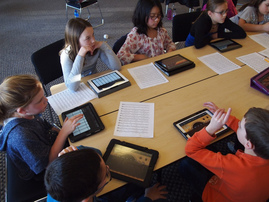 Stock iPads in the class photo from Flickr Stock iPads in the class photo from Flickr At the end of session one, I was genuinely excited to go back home and test out some of the ideas that had been discussed, so knowing that Simon Crook was the first speaker for session two, with the presentation title BYOD, mobile devices and apps in K-12 schools had me champing at the bit to get back into the venue. Simon started out by saying something that I have observed, that many implementations of BYOD are in actual fact, implementations of BYODD, or bring your own designated device. Schools either give a list of acceptable devices, sometimes with one device listed, sometimes with multiple devices listed, or they give a list of minimum specifications that need to be met for the device to be acceptable. This came about due to the end of funding for the DER (Digital Education Revolution) program, and saw schools wanting to continue with the use of devices, but without the funds to do so. The choice to move to a BYO program is therefore a financial choice. Simon strongly believes that it is a financial choice for the schools and not the parents. Simon also discussed that the move to a BYO program as a drive for pedagogical change is a contentious factor for some people. Simon posed the question to the audience is BYOD for everyone? Of course the answer is not quite as simple or straightforward as a yes or a no, but is a combination thereof. BYO programs are not for everyone if the teachers within a school are not ready for it. Teachers need significant professional development and support to move to a BYO program to facilitate high quality teaching in a different pedagogical framework and utilising a different infrastructure. It is not enough to simply move everyone to devices, they need to be used appropriately and teachers need the professional development to understand how to best achieve this. I’ve written previously about the SAMR model and its application for BYO programs and believe that it plays a significant factor in genuine use of devices in classrooms. At the very least, Simon pointed out, teachers need to have devices of their own to utilise. I have known a school who rolled out a device to each teacher for twelve months to use as they were able to, with support, in the classroom before opening up the door to BYO programs. Only one class went ahead with a BYO program, and that teacher was highly engaged with using the provided device and worked to learn how to gain best results from the BYO program. Three other questions were listed that need to be asked, to determine if a school is ready for a BYO program:
“Using technology in school should be about using it to complement the already excellent pedagogy going on, not about the ‘keeper of the kingdom’ saying no to ‘protect’ the school systems. The pedagogical needs should inform the IT decisions, not the other way around.”  Original author unknown. Retrieved from http://9gag.com/gag/ajAerM1/equality-vs-equity on 14 August 2016 Original author unknown. Retrieved from http://9gag.com/gag/ajAerM1/equality-vs-equity on 14 August 2016 Buy in from the school leadership is critical, as those schools where the leadership is on board and directs the IT team to find the solution often see more success than those schools where the leadership are ambivalent and simply ask the IT team if it is doable. There are factors to be considered, such as coverage v capacity as previously mentioned, and a genuine need to consider the security and protection of the students from undesirable content on the internet, but it needs to be considered intelligently, rather than simply whitewashing the internet en masse. Additionally, part of the conversation should be about teaching digital citizenship, which may form part of the conversation around Communicating and interacting for health and well being and Contributing to healthy and active communities, both of which are part of the Australian PDHPE curriculum and for which a variety of age targeted resources are available on the Cybersmart website. Following on from this was the discussion of ‘equity’ which can often be a cause for consternation around BYO programs. Simon made his position clear – equity is not about the lowest common denominator, it is not about making one software suite dominant and that cloud computing is the way to go. Simon indicated that decisions about hardware and software are going to vary from family to family and that where possible, utilising cloud-based storage would facilitate engagement as it would remove the problems of “I forgot my flash drive” or the issues of “I don’t think that’s the right version, there’s a newer one on my computer at home” that teachers often hear, from both students and colleagues. Ultimately, BYO programs are for everyone. Hardware prices continue to drop and there are an increasing number of options for those families who are price-point sensitive. The critical thing to remember, however, is that a dialogue needs to be opened up, early in the thinking about BYO programs to address concerns from parents, students and teachers, and that the dialogue needs to be ongoing. If you are curious about implementing BYOD, there are a growing number of schools who have implemented it, and many of these schools are open to visitors to find out more about what it looks like in practice. Some online resources that Simon provided include the NSW DEC website BYOD Sandpit and the Sydney Boys High BYOD page. We had a few minutes after Simon finished speaking to stand and stretch, while the second speaker for session two, Matt Richards, set himself up to present Makerspaces. Matt Richards spoke about the phenomenon known as Makerspaces which are student centered spaces where students are able to utilise technology in various forms to create objects. Matt talked about how he took a disused space in his school and transformed it into a student-owned space by allowing groups of students to paint the walls with differing images, and the leveraging of the tech-savvy students, who ordinarily hide away, as mentors for others wanting to learn more about technology. His aim, he said, was “…to create a space where kids learn how stuff works.” Makerspaces doe not require large amounts of cash to get started, and Matt related how he started simply with a number of old defunct computers, and the students were dismantling them and attempting to repair them and get them to work again. These achievements generated confidence and a buzz of accomplishment in the room which led to an increase in student self-efficacy as they experienced success, even if it was in the creation of ‘useless devices’ such as the one shown below. Beyond utilising defunct computers, Matt spoke about a range of low-priced resources including Goldieblox,Osmo, Littlebits, Raspberry Pi and Unity amongst a range of small kit computers. Matt said that the Makerspace movement changes teachers roles from content leaders, to relationship facilitators. Matt’s final point was significant, and I believe ties his, Simon Crook’s and Richard Byrne’s talks together: “We need to evolve learning spaces from teacher-centric to student-centric, and getting there is going to see different paths taken for different schools.” This sentiment can be applied to BYO programs, as well as game inspired learning. That is the end of day one, session two from my FutureSchools ClassTech wrap up. The next article will include the brief lunchtime session with Richard Byrne and Sue Waters which took place in the expo hall, as well as session three of the ClassTech conference Stream, covering 3D printing and the Connected Classroom See here for the list of articles in this series. |
Categories
All
|
Support |
© COPYRIGHT 2015. ALL RIGHTS RESERVED.
|

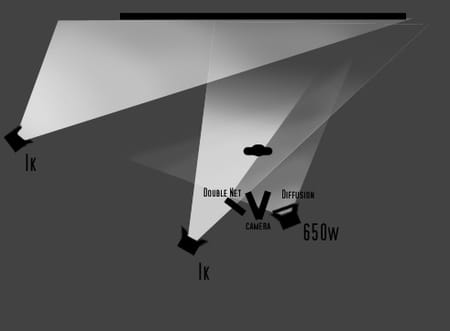
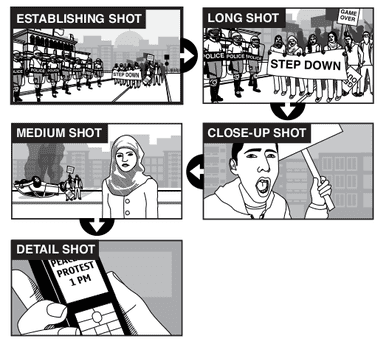
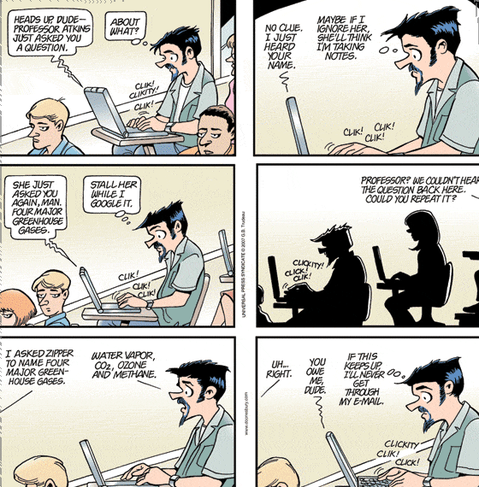
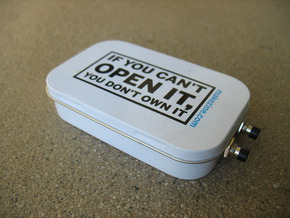
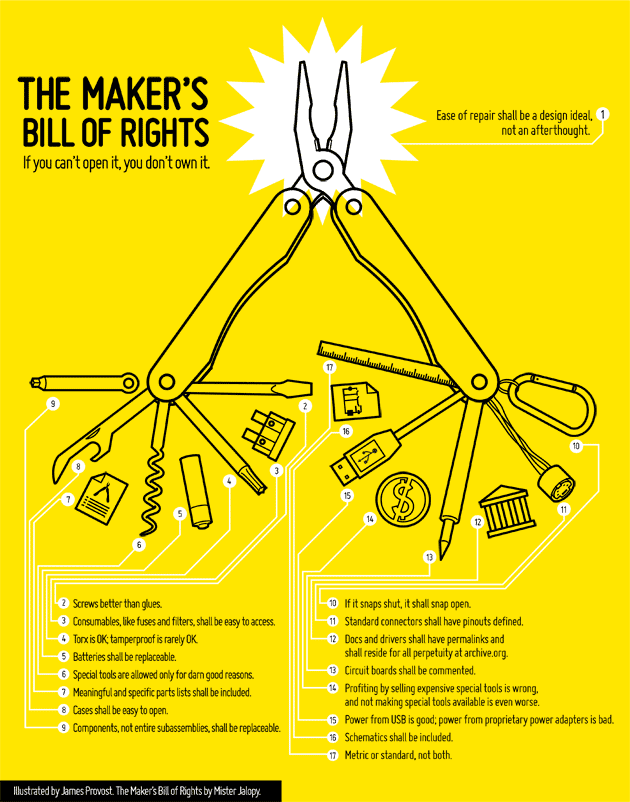
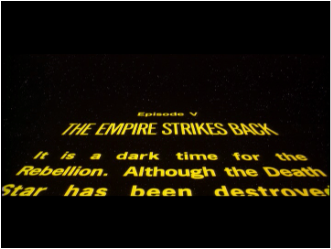
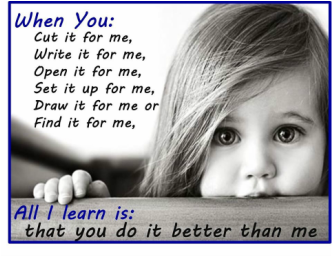

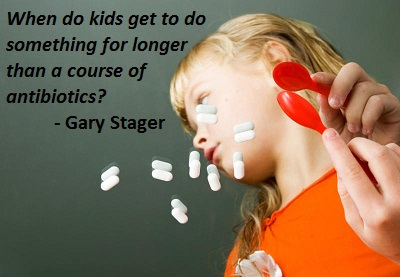

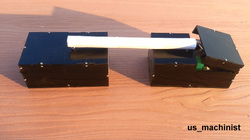
 RSS Feed
RSS Feed